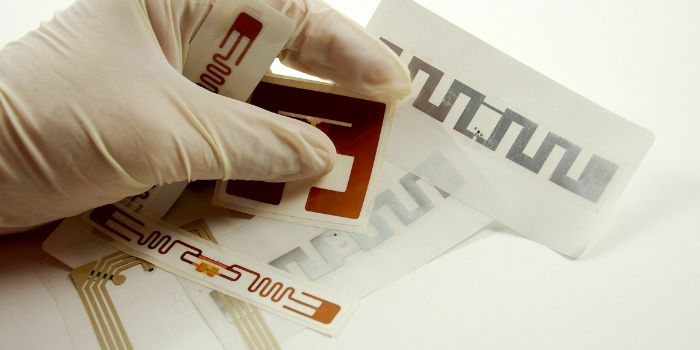Custom RFID tags are designed to meet the specific needs of your business. They can be modified to include special features that make them more durable, easier to use, or resistant to tampering.
Its numerous personalization options make it possible to create a tag that is truly unique to your company. This can help you stand out from the competition and make it easier for customers to identify your products.
What are Custom RFID Tags?
Custom RFID tags are specially designed RFID tags that are created according to specific customer needs. Unlike off-the-shelf RFID tags, which are mass-produced and have generic applications, custom RFID tags are tailor-made for specific customers.
They primarily have read/write functionality and can be programmed to store large amounts of data. Some customization options include the tag’s size, shape, and memory capacity. Custom RFID tags can also be printed with customer-specific logos or other information.
While custom RFID tags cost more than off-the-shelf tags, they offer several advantages. For example, their unique design means they can be used in applications where off-the-shelf tags would not work.
Features of Custom RFID Tags
Custom RFID tags come with a variety of features that can be tailored to the needs of your business. Some of the most common features include:
- Read/Write Functionality. This is a critical feature for RFID tags that will be customized for specific needs. It allows businesses to change the data stored on a tag as needed.
- Increased Memory Capacity. Custom RFID tags can be programmed to store large amounts of data. This is perfect for businesses that need to track a lot of information about their products.
- Unique Designs. With custom RFID tags, you can choose the size, shape, and color of your tags. You can also add special adhesives! This makes it easy to create a tag that is unique to your company.
- Printing Options. Custom RFID tags can be printed with customer-specific logos or other information. This is a great way to promote your brand and make your products easy to identify.
- Increased Durability. Custom RFID tags are designed to be more durable than off-the-shelf tags. For example, RFID industrial tags can withstands harsh conditions.
- Special Features. Custom RFID tags can be equipped with special features, such as security encryption, that make them more resistant to tampering.
- Diversified Functionality. You can add special functionalities to your tag according to your industry’s needs, such as sensor tags that can monitor temperature or humidity.
- Choose Appearance/ Face Stock. The first step in designing a custom RFID tag is to choose the appearance or face stock. PET (polyethylene terephthalate) and PVC (polyvinyl chloride) are the most popular options.
Applications for Custom RFID Tags
Custom RFID tags have a wide range of applications. They can be used in any situation where you need to track information about your products. Some common applications include:
- Tracking Objects in Water. You can customize RFID tags to be waterproof. For example, silicone wristbands have strong water-resistant properties, making them ideal for use in saunas, water parks, and other wet environments.
- Tracking Metallic Objects. Attaching UHF RFID inlays on metallic surfaces can be difficult because the metal can interfere with the tag’s signal. However, metal-mount RFID tags are designed to overcome this challenge.
- Monitoring Temperature-Sensitive Products. You can equip RFID tags with sensors that monitor the temperature of a product. This is perfect for tracking temperature-sensitive items, such as food or pharmaceuticals.
- Tracking Assets in Harsh Environments. You can create RFID tags that can withstand harsh conditions, such as extreme temperatures or exposure to chemicals. This makes them ideal for tracking assets in challenging environments, such as mines or factories.
RFID Tags Customization Levels
When you visit an RFID tag manufacturer, you will choose from a variety of customization options. The level of customization will depend on the needs of your business. Here are the three levels of RFID tags customization:
- High Customization
This involves the construction of RFID tags from scratch. In this case, you will give all your details and preferences to the manufacturer, and they will design a tag that meets your specific needs.
This is the most expensive option, but it gives you the most control over the design of your tags. It also has a long waiting time since the tags need to be designed and manufactured from scratch.
- Medium Customization/ Semi-Customization
This involves the customization of an existing RFID tag template. In this case, you will choose an RFID tag off-shelf, and the manufacturer will add your company logo or other information.
You can also add special adhesives, backings, encoding, and custom printing. You may have little control over the tag’s design, but you will be able to add your company’s branding.
- Low Customization/No Customization
In this case, you will buy an RFID tag that is already made. You can choose from a variety of shapes, sizes, and colors.
Once you choose the tag, the manufacturer will undertake a few processes, such as encoding and printing your company logo. This is the quickest and most affordable option.
Choosing Your Customization Levels
Now that you know the three levels of RFID tag customization, how do you choose the right one for your business? Consider the following factors:
- Your Budget. If you have a limited budget, you may have to settle for low or no customization.
- The Type of Asset You Wish to Track. The type of asset you want to track will also determine the level of customization you need. For example, if you want to track temperature-sensitive products, you will need tags with sensors. This means that you will have to go for high customization.
- The Environment in Which the Assets Will Be Used. The environment in which your assets will be used is also a factor to consider. If you want to track assets in a harsh environment, you will need tags that can withstand extreme conditions, such as epoxy RFID keyfobs.
- The Level of Security You Need. If you want to track high-value assets, you will need tags that are difficult to tamper with.
- Your Branding Goals. If you want to use RFID tags as a marketing tool, you will need visually appealing tags.
Whichever customization level you choose, make sure that the tags meet your specific needs. Contact us for more details.
Related Articles
- Learn All About Different Types Of RFID Tags
- The Beginner’s Guide To RFID
- LF, HF, And UHF Frequency: What’s The Difference?
- RFID VS Barcode: Which One Is Better For Your System?
- Top 15 Benefits Of Using RFID For Events
- How To Buy RFID Tags – An All-Inclusive RFID Tag Buying Guide
- Here’s everything you want to know about RFID tags


